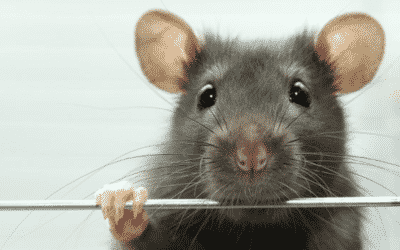
Rats. A pest in both urban and rural life, one of the most adaptable creatures on the planet and virtually impossible to get rid of.
Denmark has seen an increase in reports on rats the past decade, and the City of Copenhagen receives more than 8,000 reports on rat sightings a year.
Recently, the philanthropic association Realdania had invited a wide range of stakeholders to BLOXHUB to clarify the scale of the problem in Denmark and evaluate the possibilities of implementing an effort to combat the rats.
The Danish “rat model”
According to Danish law, owners of both businesses and private residences are required to control rats on their property. If a rat is spotted anywhere in Denmark, it is mandatory for citizens to file a report. Once a rat is reported, the check and removal are performed through the local municipality free of charge. The estimated annual expenses for rat control and extermination is 200 million DKK. The participants, coming from both the private and public sector, agreed that the free model is beneficial, but several pointed out that there are no control measures in place ensuring that the law is carried out.
Similarly, rat prevention is not formally integrated properly in real estate sales processes. Rats can do major damage to buildings, and in Denmark alone, it is estimated that the cost of these damages are between one half and one billion DKK a year. Their primary nesting places are in the sewer pipes, where they cause considerable damage, when they build their nests or gnaw their way out of the pipe and create a blockage. Participants recommended that checking for rats should be part of the mandatory house reports in preparation for a sale.
“The problem includes the pipes in private homes. People don’t check the pipes. They check tiles, grout and installations, but not the pipes,” said Pest control inspector from the City of Copenhagen Kim Maimann.
Design with ”rat glasses”
Margit Lund Christensen from HOFOR – Greater Copenhagen Utility – recommended that a new rat control system for buildings be put in place. “We need to put our “rat glasses” on when we plan and design a new building to make sure they’re ratproof. If a facade is too thin, it gives direct access to the insulation underneath.”
Pest inspector Kim Maimann mentioned an example from the construction of a new apartment complex, where the contractors had asked for advice on ratproofing, but not followed the recommendations for proper building materals.
“Six months later we had to tear up floors, because there were dead rats underneath. They saved 20.000 DKK on building materials for that apartment, but it ended up costing them half a million.”
Technology as a tool
One of the other clear conclusions from the workshop was that current technological developments will revolutionize the way, we prevent and combat rats. New technology can help track movement patterns and focus the control efforts based on real-time data and make it easier to report sightings and damages. A collaboration between BLOXHUB members Copenhagen Solutions Lab and maker space Under Broen has already yielded a new prototype for an intelligent, wireless, no-poison rat trap. https://cphsolutionslab.dk/news/rottefaelde-anmeldelse-p1-public-service
Break down the silos
But this should be combined with both better information and a changed human behavior in order to be effective, said biologist and ph.d. in pest control, Ann-Charlotte Heiberg.
“Supermarkets can’t lave deliveries out for hours, before they’re placed in the store, and private citizens need to consider things like food scraps in their organic waste/compost or pen for hens.” She also recommended more cross-sector collaboration similar to the model for the workshop.
”Rats don’t recognize the border lines between responsibilities for the private and public sector. We need better collaboration with local city government, utility providers and other relevant actors.
